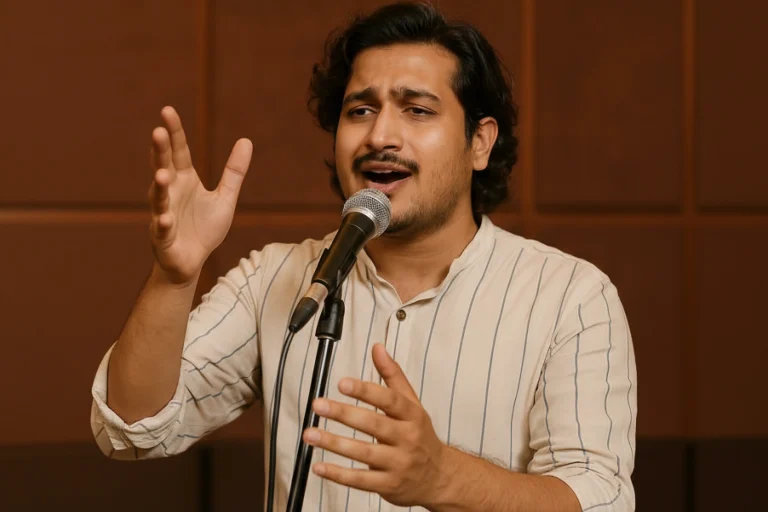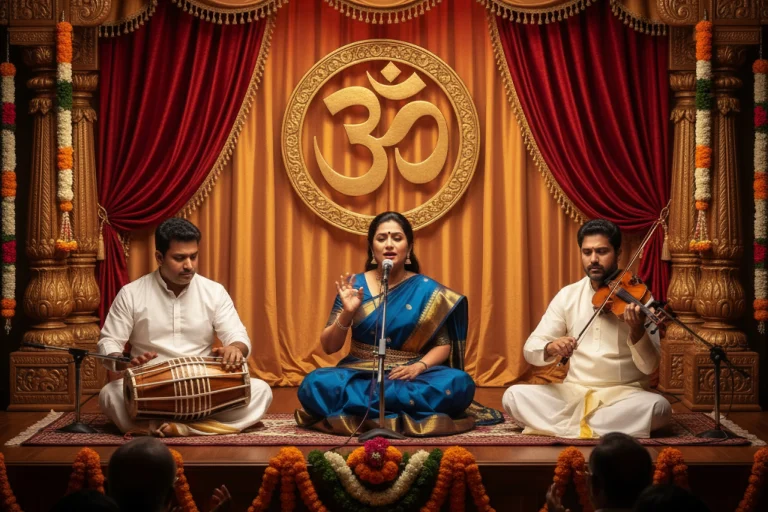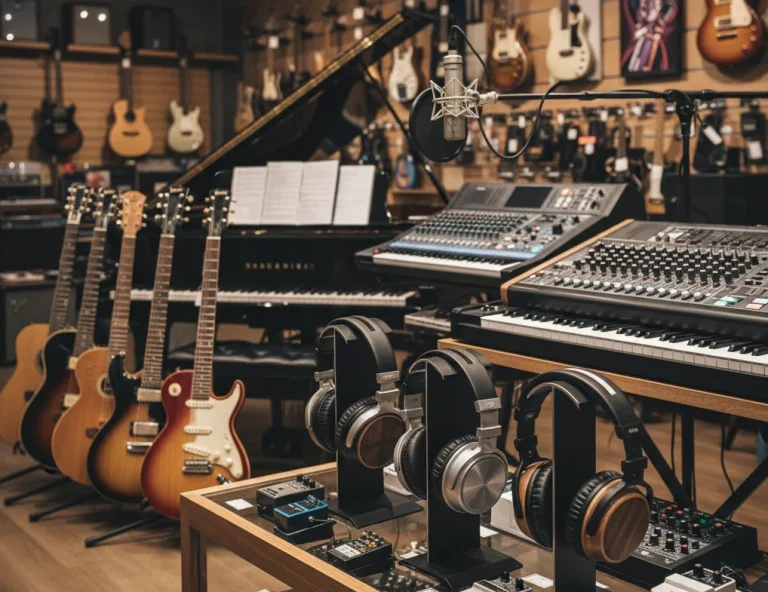All Topics
- Alchemizing Music Concepts for Students
- Artist Spotlight
- artium gift card
- Artium Maestros
- Artium News
- Carnatic Music
- Devotional Music
- Editorials by Ananth Vaidyanathan
- Film Music
- Guitar
- Hindustani Classical Music
- Indian Classical Music
- Indian Folk Music
- Insights
- Instruments
- Karaoke Singing
- Keyboard
- Kids Music
- maestros
- Music Education
- Music for Kids
- Music Industry
- Music Instruments
- Music Theory
- Music Therapy
- Piano
- piano guide
- Tamil Film Music
- Telugu Film Music
- Time Theory
- Tools
- Uncategorized
- Vocal Singing
- Vocals
- western classical music
- western music
- Western vocal music
Sur Vs. Software: How Autotune Is Reshaping the Voice of Classical Music?
Sur Vs. Software: How Autotune Is Reshaping the Voice of Classical Music?
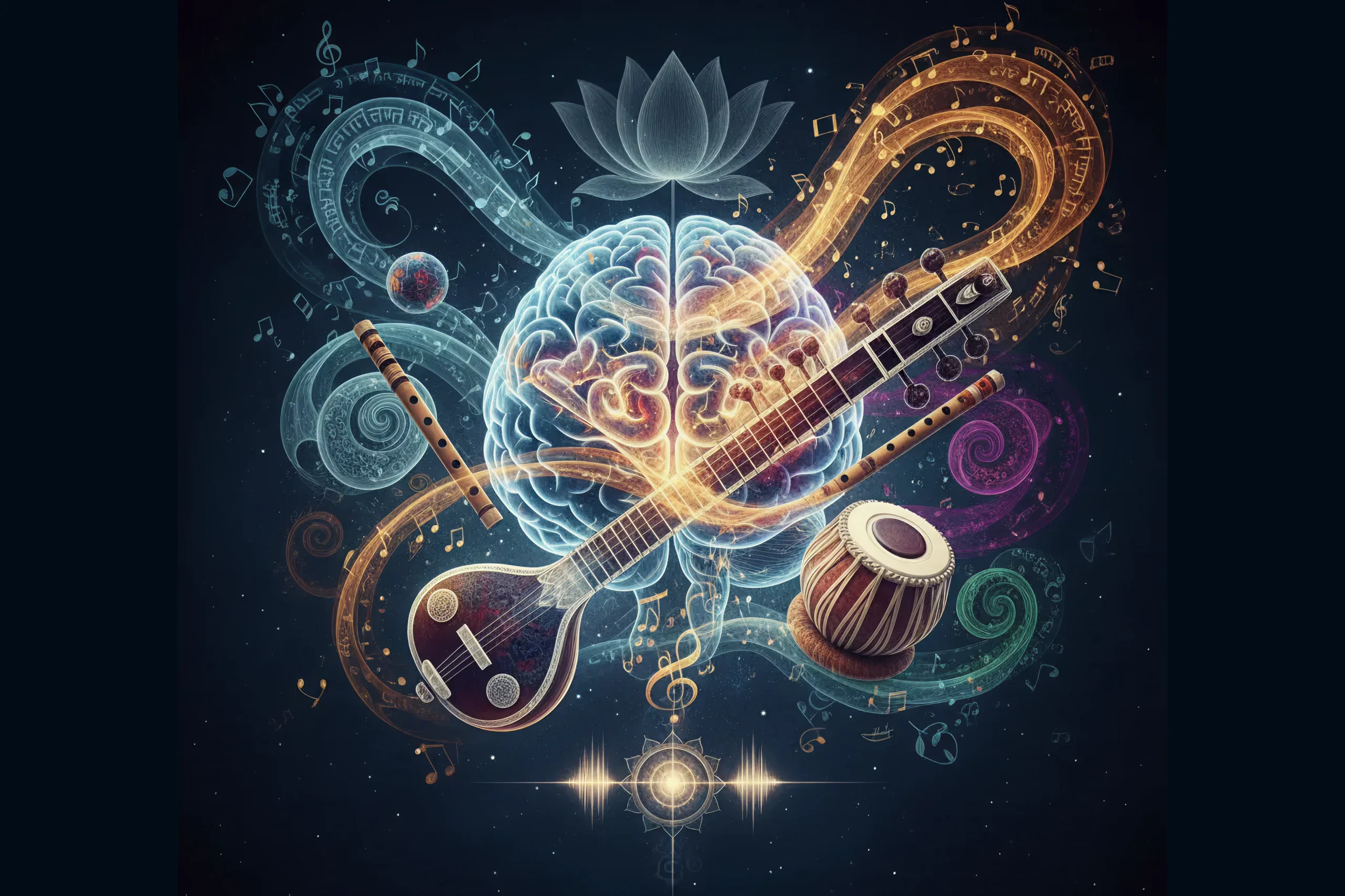
Table of Contents
In today’s hyper-connected world, where every note of a singer’s performance can be digitally “fixed” and shared at the click of a button, a critical question emerges: what happens to Sur — the timeless soul of Indian classical music?
With the surge of online music classes and an ever-growing desire to learn music online, a new generation of students is embracing the digital revolution. Laptops and smartphones have become modern-day tanpuras, turning bedrooms into classrooms and opening doors to a universe of gurus, courses, and workshops accessible from anywhere in the world.
Yet, this digital ease comes with its own paradox. Autotune, originally a subtle studio tool designed to nudge a slightly misplaced note back into harmony, has now become an unmistakable sonic signature — almost a genre-defining effect. Whether in glitzy Bollywood soundtracks, flashy fusion tracks, or the recordings of aspiring independent artists discovered during online music classes, digital pitch correction is omnipresent.
However, when such technology encroaches on the sacred space of Indian classical and semi-classical music — traditions founded on nuance, human imperfection, and years of painstaking riyaz — it sparks a profound and urgent debate. Is this “perfection” democratizing music and making learning more accessible, or is it quietly eroding the essence that makes Indian classical music so emotionally resonant?
As playback legend Shankar Mahadevan observed in an interview, “Technology should enhance the musician, not replace him. The magic lies in the voice, not in the software.”
With an increasing number of students choosing to learn music online and teachers leveraging new platforms to reach global audiences, the responsibility to preserve authenticity and “sur” has never been more crucial. Amid the convenience of digital correction, can online education still inspire reverence for the soul of music?
What Is Autotune?

Autotune is a pitch-correction technology that detects a singer’s note and subtly (or drastically) adjusts it to the nearest “correct” pitch. In pop, hip-hop, and EDM, this has become a creative signature, the glossy, robotic vocal texture that dominates modern charts.
But Indian classical music, with its centuries of evolution, is built on the human nuance of imperfection. The beauty of a meend (glide), the micro-oscillation of an andolan, the trembling intensity of a komal swar, these aren’t mistakes. They’re expressions of bhava (emotion) and rasa (mood).
Autotune, however, quantizes emotion into mathematics. It treats a singer’s soul like data.
The Clash Between Precision and Expression
Indian classical music operates in a microtonal universe, between the notes of the Western 12-tone scale exist 22 shrutis, or microtones. Each raga depends not only on notes but on how those notes are approached, sustained, and resolved.
Autotune’s algorithm, however, is based on the Western equal-tempered scale. It cannot understand or preserve these subtle deviations, it irons them out.
So when a classical singer’s recording is “cleaned up” digitally, the raga’s character can quietly fade. The ethereal shade of Raga Todi, the pathos of Raga Bhairavi, the tender melancholy of Raga Marwa, all can sound sterile when flattened to perfection.
As Pandit Ajoy Chakrabarty once remarked, “The beauty of sur lies in its human vulnerability. The day we remove that, we will have notes — not music.”
A Brief History: From Tanpura to Tuning Software
For centuries, Indian musicians tuned their instruments by ear, guided by the tanpura’s drone — a living reference for tonal stability. The relationship between voice and drone cultivated a natural precision, born of practice and listening.
With the advent of recording technology came the studio revolution, marked by the introduction of condenser microphones, compressors, and equalizers. These tools enhanced sound without interfering with its integrity.
But with the advent of digital audio workstations (DAWs), the shift became philosophical. Musicians could now manipulate reality — shifting pitch, time, and even emotion at will.
In film and commercial music, autotune became a time-saver. A singer no longer had to redo a slightly off note; engineers could “nudge” it digitally. Over time, what started as convenience became convention.
And today, perfection has become the default expectation.
The Psychology of Perfection
Why are we so obsessed with flawless sound? The answer lies in psychological conditioning.
Listeners raised on pop and streaming platforms are accustomed to pristine audio — compressed, tuned, and mastered to sonic symmetry. This has altered our auditory tolerance. Slight detuning, once natural, now feels jarring.
Neuroscientist Dr. Aniruddh Patel, in his book Music, Language, and the Brain, notes that the brain rewards predictability — it perceives stable pitch and rhythm as pleasurable. Autotune amplifies this stability, offering instant gratification.
But art, especially Indian classical music, thrives in tension and release, imperfection and authenticity. When music becomes too predictable, it loses depth. A note slightly off-pitch may carry longing or yearning — the very emotions that make the human voice sacred.
As Ustad Rashid Khan said during a workshop, “Sur is not mathematics. It’s emotion guided by discipline. Without emotion, sur is sound without life.”
The Seduction of Perfection
Modern singers face a paradox. On one hand, they are trained to value sur and taal — precision earned through years of riyaz (practice). On the other hand, the industry demands speed, output, and “perfect” recordings.
Young classical and fusion artists often feel compelled to “sound right” rather than “feel right.” In this race for sonic polish, something deeply human is lost — the breath, the strain, the living texture of a voice in motion.
The risk? Homogenization.
Every singer begins to sound similar — clean, balanced, and emotionless.
Playback singer Kavita Krishnamurti once lamented,
“In the old days, one note of Lataji or Kishoreda was enough to recognize them. Now, sometimes, I can’t tell who is singing — the software has erased individuality.”
The tragedy isn’t just artistic. It’s cultural.
The Hybrid Reality: Can Technology and Tradition Coexist?
Despite the risks, technology isn’t the enemy — it’s the misuse. When used consciously, it can enhance, not replace, the human element.
For instance:
– Pitch analysis tools help students visualize intonation and improve their ear training.
– AI-based raga assistants can provide real-time feedback on shrutis and scale adherence.
– Studio tools like reverb, delay, and equalization can recreate the acoustic richness of live baithaks.
Autotune itself, when applied subtly, can correct minor inconsistencies without altering emotion. The goal is not to sanitize, but to support the singer.
Music producer A. R. Rahman, known for his blend of classical sensitivity and technology, once said,
“The soul of music should remain untouched, even if the tools evolve. Technology is like light — it should reveal, not blind.”
This balanced approach — reverence for the arts and mastery over software — defines the modern classical innovator.
Case Study: When Fusion Meets Correction
Take iconic music platforms like Coke Studio or MTV Unplugged—modern stages where the classical and the contemporary not only coexist, but collide in dynamic new forms. These settings have revolutionized not just the way we experience music, but also the ethics and aesthetics of sound correction.
The Art of Seamless Blending
In fusion performances, a classical vocalist may share space with a jazz saxophonist, a rock guitarist, or electronic synth textures. The challenge here isn’t to erase individuality, but to enable radically different sonic worlds to coalesce smoothly. Here, autotune is used as an aid in balancing this intricate tapestry of sound.
- Invisible Correction:
Rather than acting as a conspicuous effect (as in pop or hip-hop), autotune in these fusion contexts is employed with remarkable subtlety. Producers use it to gently smooth over slight pitch clashes that arise when classical improvisation meets fixed-tempo, harmonically dense arrangements. The correction is not about “robotic” consistency, but about creating a unified listening experience where no element overpowers or distracts from the collective expression. - Preserving Human Expression:
What sets this approach apart is intentional restraint. Producers and sound engineers often manually adjust the “retune speed” and “pitch tolerance” within the software, allowing for swift microtonal movements—such as a ‘meend’ or ‘andolan’—to remain organic and vibrant. This means that while the music is polished, the expressive micro-fluctuations—those brushstrokes of emotion—so crucial in Indian classical singing are meticulously preserved.
Technical Collaboration
- Flexible Parameters:
Advanced pitch correction software now allows for custom tuning curves, enabling engineers to “teach” the software to understand raga-specific intonations or avoid snapping to non-existent Western semitones. For instance, in a performance of Raga Yaman, the autotune is set not to “correct” the natural oscillation on the tivra Ma, which is deliberate and essential to the raga’s color. Such nuanced settings demand not just technical proficiency, but an understanding of the tradition. - Live Performance Adaptation:
Many fusion acts broadcast live or record in a single take. Here, the role of autotune is as a gentle net, catching the rare slip while letting the raw energy of a live performance shine through—protecting both artistic integrity and listener comfort.
Artistic Examples & Impact
- On Coke Studio Pakistan, you might hear a Sufi vocalist’s powerful alaap joined by pulsating bass and shimmering electronic pads. Any slight pitch drift during high-energy improvisation is very subtly corrected—not to sterilize, but to harmonize with digital instruments tightly synced to software.
- In MTV Unplugged India, a Carnatic violinist and Hindustani vocalist may collaborate with electronic percussion. Here, autotune provides a safety net during sections of intricate cross-genre improvisation, ensuring that the mood is not broken by accidental “off” notes. Yet, the individuality of each musician remains vivid and authentic.
Balancing Tradition with Innovation
When fused music is produced with sensitivity, autotune becomes almost invisible, a stagehand rather than a star. The listener feels emotional dynamism, not digital perfection.
This approach celebrates both human imperfection and modern clarity:
- Emotion still leads—the artist’s intention and style carry through.
- Software follows—gently smoothing the interface between different musical languages.
The best fusion productions treat technology not as a shortcut, but as a tool for elevating musical expression to a place where audiences, especially those connecting via online platforms and music classes, can appreciate both the complexity of tradition and the accessibility of contemporary sound.
In this light, autotune can be an ally in cultural innovation, provided its role is always to support, not substitute, authentic musical voice and narrative. The magic, as always, lies in making the technical invisible and the emotional unforgettable.
The Next Frontier: AI Voices and Authenticity
The rise of AI-generated music presents a more profound philosophical challenge. AI can now mimic human voices, even reproduce alaps and taans algorithmically.
Imagine a machine rendering Raga Yaman with mathematical perfection — every microtone in place, every oscillation measured. Would it move you?
Probably not. Because emotion is not just in the note, but in how the singer feels while producing it.
AI can simulate sound, but not experience. It lacks the emotional memory — the life that gives music meaning.
As philosopher Jiddu Krishnamurti once wrote, “The mechanical mind can imitate love, but it cannot feel it. Similarly, imitation of music is not music.”
That distinction will become crucial in the next decade as AI reshapes creative industries.
The Role of Education: Teaching the Next Generation
Music schools and gurukuls face a pivotal responsibility — to teach not just how to sing, but why to sing.
Students must understand the ethics of sound: that Sur is a sacred vibration, not a product.
Encouraging young artists to record raw takes, to listen to their imperfections, and to refine naturally is essential. The goal should be emotional authenticity over digital precision.
As Pt. Bhimsen Joshi famously said, “Riyaz is not just for the voice; it’s for the mind. The day your heart starts singing, you’ll stop needing correction.”
The Cultural Implication: From Temple to Algorithm
Indian classical music was born in temples and courts — spaces of devotion and discipline.
Today, it exists in digital ecosystems governed by algorithms and virality. The very platforms that bring artists exposure also reward “catchiness” over depth. The challenge for classical musicians is to adapt without surrender. To use technology for reach, not for validation.
The future belongs to those who can retain their individuality amidst the noise, who can make listeners feel, even through a compressed MP3.
The Soul Beyond the Software
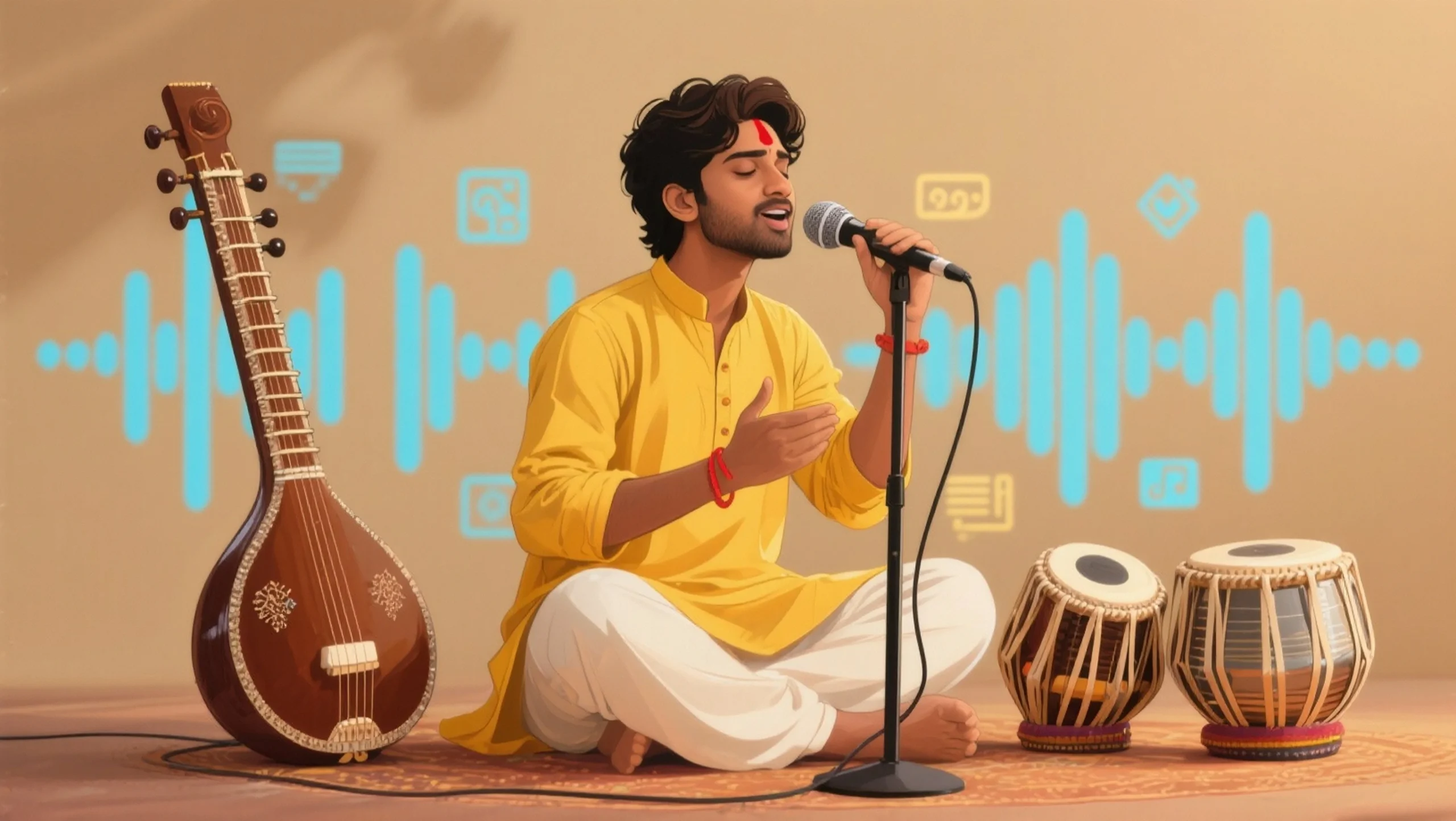
The voice of classical music stands at a profound crossroads. One path leads toward digital perfection—clean, safe, and perhaps soulless. The other honors imperfection—raw, human, and divine. Autotune, for all its technological magic, can mend a note but not mend a spirit. Today’s task for musicians, students, and educators isn’t to reject technology. Instead, it’s to humanize it—to ensure every digital waveform still carries the warmth of breath, the pulse of emotion, and the spark of truth.
As Ustad Amjad Ali Khan poignantly reminds us, “Technology will come and go. But the sound of a sincere note will always outlive machines.”
This is precisely where platforms like Artium Academy become so significant. Artium bridges ancient wisdom with digital opportunity, creating a space where the heritage of Indian classical music meets the power and reach of new technology. Through Artium’s robust ecosystem of resources, anyone, regardless of their background or location, can now access genuine, high-quality music education.
You can learn music online with guidance from legendary maestros and accomplished teachers, immersing yourself in authentic techniques, nuanced ragas, and the philosophy behind every note. Online singing classes at Artium don’t just teach you to sing the “correct” notes, they inspire you to understand the emotional core of music, to appreciate sur, rhythm, and rasa, and to develop your own expressive voice.
This new wave of music education ensures the tradition not only survives in a digital world, but thrives. Whether you are a beginner seeking your first lesson or an experienced singer hoping to deepen your artistry, Artium empowers you to combine the best of both worlds, embracing helpful software, but always serving the soul of music.
In the evolving story of Indian classical music, tools like autotune and online learning are not threats, but powerful allies, if guided with awareness and heart. Let’s teach technology to serve sur, and open the doors for anyone, anywhere, to breathe new life into this magnificent tradition.
FAQs
Autotune is a digital pitch-correction technology that detects a singer’s note and subtly or dramatically adjusts it to the nearest “correct” pitch, as defined by its algorithm. In many popular music genres, it’s often used creatively for its distinctive electronic effect or simply as a studio tool to refine minor imperfections.
However, Indian classical music is built on the nuances of natural, expressive singing—meends (glides), gamaks (oscillations), and countless microtonal shades (shrutis). When used excessively, Autotune can “flatten out” these subtleties, making all notes sound precise but potentially stripping away the character, emotion, and individuality that define each raga and performance. Instead of elevating the music, it can inadvertently reduce it to mathematical perfection, overshadowing the soulful imperfection at its core.
Digital pitch correction is a double-edged sword in classical singing. When applied with sensitivity—correcting only minor lapses without interfering with deliberate, expressive variations—it can serve as a supportive tool for clean recordings. However, the true essence of sur (the perfect note) and riyaz (dedicated, mindful practice) lies in the musician’s journey toward precision through discipline and feeling, not instant software correction.
If pitch correction replaces, rather than assists, this journey, essential aspects of authenticity, emotional color, and artistic growth may be lost.
Technology has revolutionized access to Indian classical music education. Platforms like Artium and other online music classes now connect students from across the world with exceptional teachers and resources. Virtual classes, interactive exercises, and digital feedback tools enable anyone to learn music online, regardless of their location.
- Personalized feedback: Recording and playback technology allows students to self-assess and teachers to give detailed, constructive feedback on subtle nuances.
- Resource accessibility: Students can now access tutorials, guided practice sessions, and rare recordings that were previously limited by geography or exclusivity.
- Community and collaboration: Virtual forums and classes foster global communities where learners share progress and insights.
The challenge is to ensure that the warmth, discipline, and tradition of the “guru-shishya parampara” (teacher-student lineage) are preserved alongside these new conveniences.
Autotune inherently prioritizes precision: It snaps every note to a mathematically ideal pitch, reinforcing perfect intonation. While this may make music sound “flawless” to untrained ears, it often comes at the expense of expressive detail. In Indian classical music, emotion is woven into slight pitch bends, vibrato, and microtonal variations—the marks of living voice and spirit. If Autotune is overused or set too aggressively, it can neutralize these expressive choices, making performances sound sterile or emotionally flat. The best practitioners use technological correction only lightly and intentionally, letting emotion lead while maintaining tonal clarity.
Yes, but only with awareness and restraint. Autotune and traditional Indian music can coexist when technology is used as an invisible collaborator—polishing only what’s unintended, while respecting deliberate artistic choices. Many classical and fusion producers use Autotune to smooth out minor slips but set flexible parameters so that intended microtonal movement and improvisation are untouched.
Authenticity is maintained when software supports, rather than overrides, human expression. It’s all about intention as when technology amplifies tradition (not replaces it), both can thrive.
The key is conscious integration. The most effective online music education platforms blend modern tools—such as high-quality audio, video analysis, and pitch-detection apps—with classical values: deep listening, respect for tradition, and an emphasis on riyaz (regular, mindful practice). Teachers can harness technology to demonstrate techniques, track student growth, and foster global connection.
Still, they must also emphasize the importance of expression, emotion, and understanding the deeper meanings behind each raga and composition. When technology is used to enable learning, personalize feedback, and give access—not to shortcut artistry—it supports the soul of classical music rather than diluting it.



